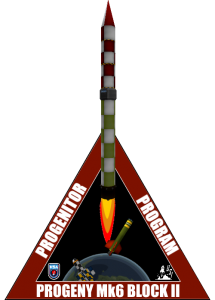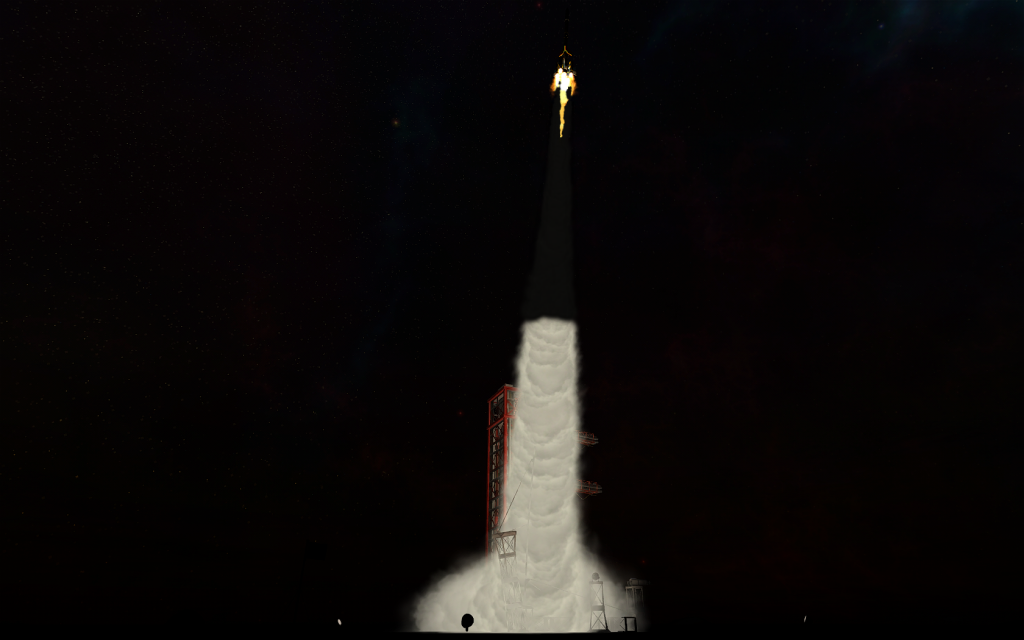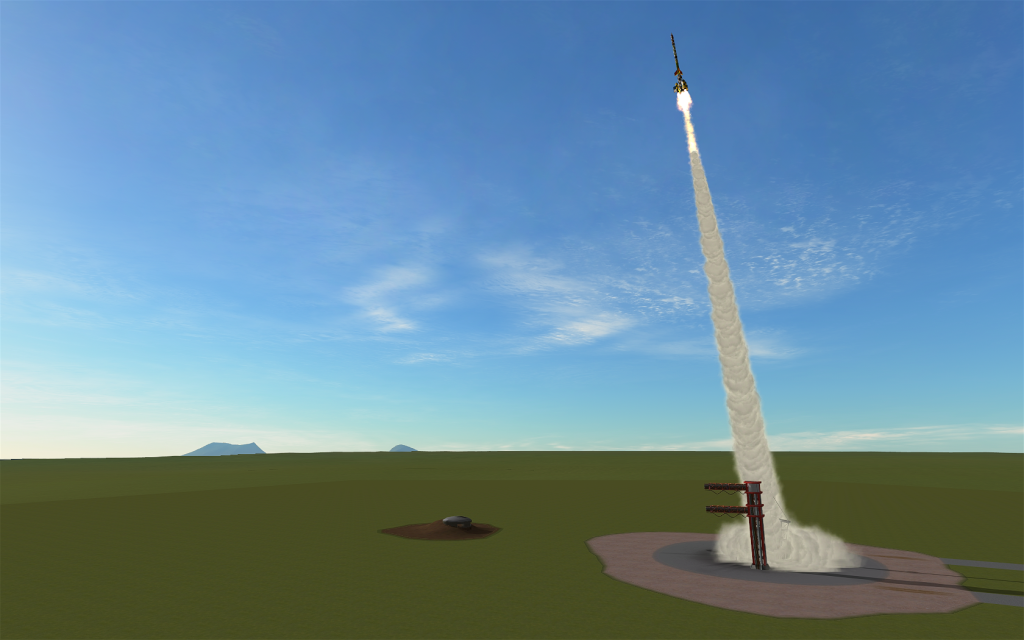 Reaching new heights, the Block II explored the radiation belts on the night side of the planet, where they extend deeper into space, while also gathering more data from a new instrument – the hemispherical ion trap.
Reaching new heights, the Block II explored the radiation belts on the night side of the planet, where they extend deeper into space, while also gathering more data from a new instrument – the hemispherical ion trap.
Tag Archive: Block II
Jul 09 2019
Progeny Mk6 Block II Flight 3 (Radiation Field Study 10)
Feb 06 2019
Progeny Mk6 Block II Flight 2 Analysis
 Ever since the Block I outperformed all expectations and flew into the region of space we expected to use the Block II to reach, this rocket hasn’t been able to find a good use in our launch lineup which is why this is only the second launch since it was first conceived back in late 2017. The mission however was well-suited to our most powerful rocket to date, which was to go as far out into space as possible to gather new radiation data and look for a second radiation belt. In addition to building on the previous radiation discoveries, an additional mission goal was to test new hibernation technology to extend the vessel’s battery life long enough to last a mission that could take several hours.
Ever since the Block I outperformed all expectations and flew into the region of space we expected to use the Block II to reach, this rocket hasn’t been able to find a good use in our launch lineup which is why this is only the second launch since it was first conceived back in late 2017. The mission however was well-suited to our most powerful rocket to date, which was to go as far out into space as possible to gather new radiation data and look for a second radiation belt. In addition to building on the previous radiation discoveries, an additional mission goal was to test new hibernation technology to extend the vessel’s battery life long enough to last a mission that could take several hours.
The Flight
The rocket had a clean launch, leaving the mounting base without impacting the support rail while firing on all 5 solid rocket motors for a total initial thrust output of 214kN, producing just over 6Gs of force to keep it pointed downrange as the nose began to lower and the fixed fin angles began to spin the rocket up. The main difference between the Block II and Block I are the 4 radial boosters that accelerate the larger and heavier Block II rocket up to speeds comparable to a Block I. They burn from 5-6 seconds before being discarded. During the first flight, the booster separation led to an impact with two of the large lower fins thanks to the decouplers throwing them away with enough force to remain lateral to the rocket. The solution was simply to let them drop away on their own by force of the rocket’s speed and spin. All four boosters made a clean separation although the rocket exhaust did scatter them and actually flung one back far enough to impact the Ascension service towers! Thankfully no major damage was done.
Aug 23 2018
Scientists Report Radiation Belt(s?) Envelop Kerbin
The data gathered from Progeny rocket flights made over the past several months have allowed scientists to put forth strong theories on what kind of radiation environment exists up in space near the planet. It will take more missions, especially orbital ones, to prove these theories but observations strongly fit with the ideas being tested. The most conclusive evidence so far came from a mission launched last month, which had a Progeny Mk6 Block I fly over the night side of the planet. Before that, we have posted other reports on the missions sent up to gather data about the so-called hazardous radiation region, which you can start reading here if you need to recap.









